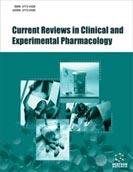Abstract
Characterized by small, highly heterogeneous patient populations, rare disease trials magnify the challenges often encountered in traditional clinical trials. In recent years, there have been increased efforts by stakeholders to improve drug development in rare diseases through novel approaches to clinical trial designs and statistical analyses. We highlight and discuss some of the current and emerging approaches aimed at overcoming challenges in rare disease clinical trials, with a focus on the ultimate stakeholder, the patient.
Keywords: Rare disease, small populations, clinical trials, patient-centric, innovation, drug development.
[http://dx.doi.org/10.1038/s41431-019-0508-0] [PMID: 31527858]
[http://dx.doi.org/10.1111/cts.12501] [PMID: 28796411]
[http://dx.doi.org/10.1186/s13023-018-0820-8] [PMID: 29751809]
[http://dx.doi.org/10.1186/s13023-018-0919-y] [PMID: 30359266]
[http://dx.doi.org/10.1186/s13023-018-0969-1] [PMID: 30678705]
[http://dx.doi.org/10.15252/emmm.201910486] [PMID: 30979709]
[http://dx.doi.org/10.1016/j.cct.2014.04.009] [PMID: 24792229]
[http://dx.doi.org/10.1056/NEJM198604033141406] [PMID: 2936958]
[http://dx.doi.org/10.1186/s13063-018-2596-5] [PMID: 29685163]
[http://dx.doi.org/10.1186/s13023-017-0636-y] [PMID: 28494776]
[http://dx.doi.org/10.1001/jamainternmed.2018.7180] [PMID: 30830192]
[http://dx.doi.org/10.1146/annurev.med.59.090506.155819] [PMID: 18186700]
[http://dx.doi.org/10.1038/s41591-018-0314-1] [PMID: 30617334]
[http://dx.doi.org/10.1602/neurorx.1.3.307] [PMID: 15717032]
[http://dx.doi.org/10.1371/journal.pmed.1001407] [PMID: 23526887]
[http://dx.doi.org/10.1038/clpt.1989.108] [PMID: 2743708]
[http://dx.doi.org/10.1093/jnci/89.15.1138] [PMID: 9262252]
[http://dx.doi.org/10.1016/j.molonc.2014.07.025] [PMID: 25160636]
[http://dx.doi.org/10.1080/09505431.2019.1606190]
[http://dx.doi.org/10.1002/cpt.415] [PMID: 27326701]
[http://dx.doi.org/10.1177/0962280212442584] [PMID: 22461073]
[http://dx.doi.org/10.1016/S2352-4642(18)30179-2] [PMID: 30119717]
[http://dx.doi.org/10.1056/NEJMoa1712649] [PMID: 29688815]
[http://dx.doi.org/10.1177/2168479018778282] [PMID: 29909645]
[PMID: 31823482]































